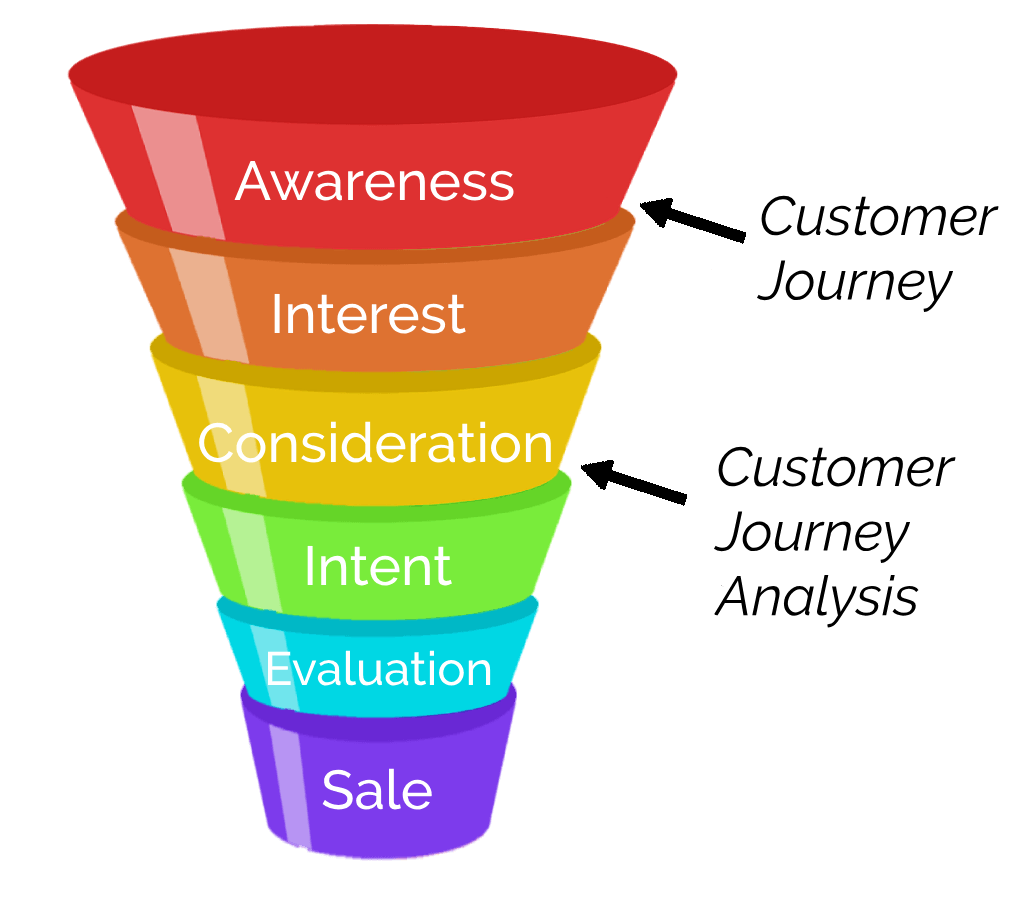Picture it. You’re sitting in on a meeting with the big guy, the head honcho, the man who writes your checks. He comes to you, the company’s SEO guru, and hits you with this idea for a new avenue of messaging on the site:
“I’ve seen a ton of volume around ‘customer journey’ and we do that for our customers. We should try and rank for that term. How do we get to the first page?”
The initial plan may be to change out a couple of page titles, plug it into meta descriptions, push it into a few sentences of the content, but to that, I say…

Unless you’re Wikipedia or Forbes, chances are you aren’t going to magically rank for a 49,500 searches/month keyword anytime soon. Your avenue for success doesn’t lie on the crowded highway, but rather on this loose analogy’s roads less-traveled.
How can you prove this alternative and respectfully turn down the big guy’s idea?
Follow this segue and I’ll present to you the reasons why you will actually get more impressions and clicks from long-tail keyword variations, and why the large volume keyword traffic doesn’t matter anyway.
Search Volume Means Nothing Without Visibility
If I told you that you could have 10% of $100 or 50% of $25 you’d pick option 2, right? It’s simple math.
But if that’s true, then why do we always gravitate towards bigger search volume when discussing keywords in strategy stages? If we are seeing a low difficulty variation of a keyword with lower volume, it in many ways can be a more valuable keyword than one with 10x the volume and a high difficulty.
In this way, the value of a keyword can’t be measured by one metric.
Let’s say we compare our rankings for two different variations of keywords, one broad and one specific.
Customer Journey – 49,500 Customer Journey Analysis – 480
‘Customer Journey’ has over 100x the volume of ‘Customer Journey Analysis’, but as you may have guessed, that is only a piece of the puzzle. Getting a decent ranking for the former is a difficult proposition. If you get to 50th, you could expect a CTR of around 0.034% (by our CTR analysis). That’s around 16 clicks per month, 16! And that’s with our (somewhat) gracious measurements for B2B terms, it’s much lower by other metrics.
If you were to focus on ‘Customer Journey Analysis’ instead, you could expect 16 clicks at position 20 (~3% CTR). You can gain more clicks for a keyword with 99% less search volume by being anywhere in the top 20. Let that sink in.
Is it a guarantee you will get to page 2? Of course not, the exercise is to illuminate the value proposition. You can pour resources into getting some visibility on a difficult, high volume keyword, and gain the 10-20 clicks per month if you manage to get into the top 50…
Or you can focus on the long-tail version, which is significantly easier to rank for and can provide the same number of clicks at reasonable rankings. You can see their difficulty scores for yourself with the Chrome/Firefox addon tool Keywords Everywhere, which shows search volume, CPC, and competition on keywords.
Not to mention…the long-tail gets better customers.
Long-Tail Queries Are Better Traffic
I know it sounds crazy, but what if I were to tell you that broad-term keyword traffic isn’t even that valuable? I’ll explain.
Imagine a customer searching for these queries. If someone is looking up ‘customer journey’, what do you think they are trying to solve? These landing pages provided by Google are trying to solve a question, so in that context, a person searching that term would likely want to know what a customer journey is. They likely heard the term in some piece of content and are searching to learn more about it. You are not going to convert someone into a user of your customer journey analysis software if they are still that early in the sales funnel.

While it is important to get eyeballs on your product in every stage, you are going to drive more conversions for users farther down the funnel. Fewer steps + more intent = more pipeline. And this isn’t just theoretical.
Wordstream says the average conversion rate for broad-term keywords in the top 10 rankings at roughly 11.45%. According to Union Street Media, the average conversion rate for long-tail keywords in the same position is 36%. That’s over 3x as likely to convert. Plus, they are already further down the funnel, and can more easily be moved into a sales position.
Even if you don’t see conversion rates in double digits, the fact that you can expect 2-3 times more conversions from your incoming traffic is an invaluable strategy to building out your future content.
What to Tell the Boss
When propositioned with getting more traffic via one broad-term keyword with unlikely success, you don’t have to come back with empty hands. Use these points as a framework for how you can present your boss with a more valuable SEO strategy.
I know if I was shown how an alternative got more clicks and conversions, was easier and faster to rank for, and let me beat out leaders in the space without having to match their web authority…I’d probably sign up right there.
To help you make your case, you can request a free SEO audit today and we’ll put together a review of your SEO strengths, opportunities, and compare our findings with your competitors.
Now go show ’em who the real SEO boss is!
